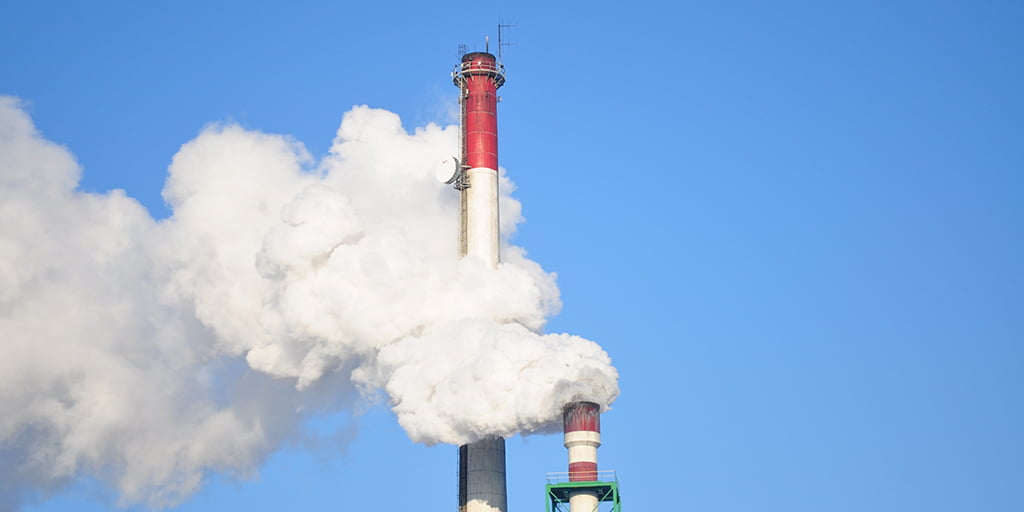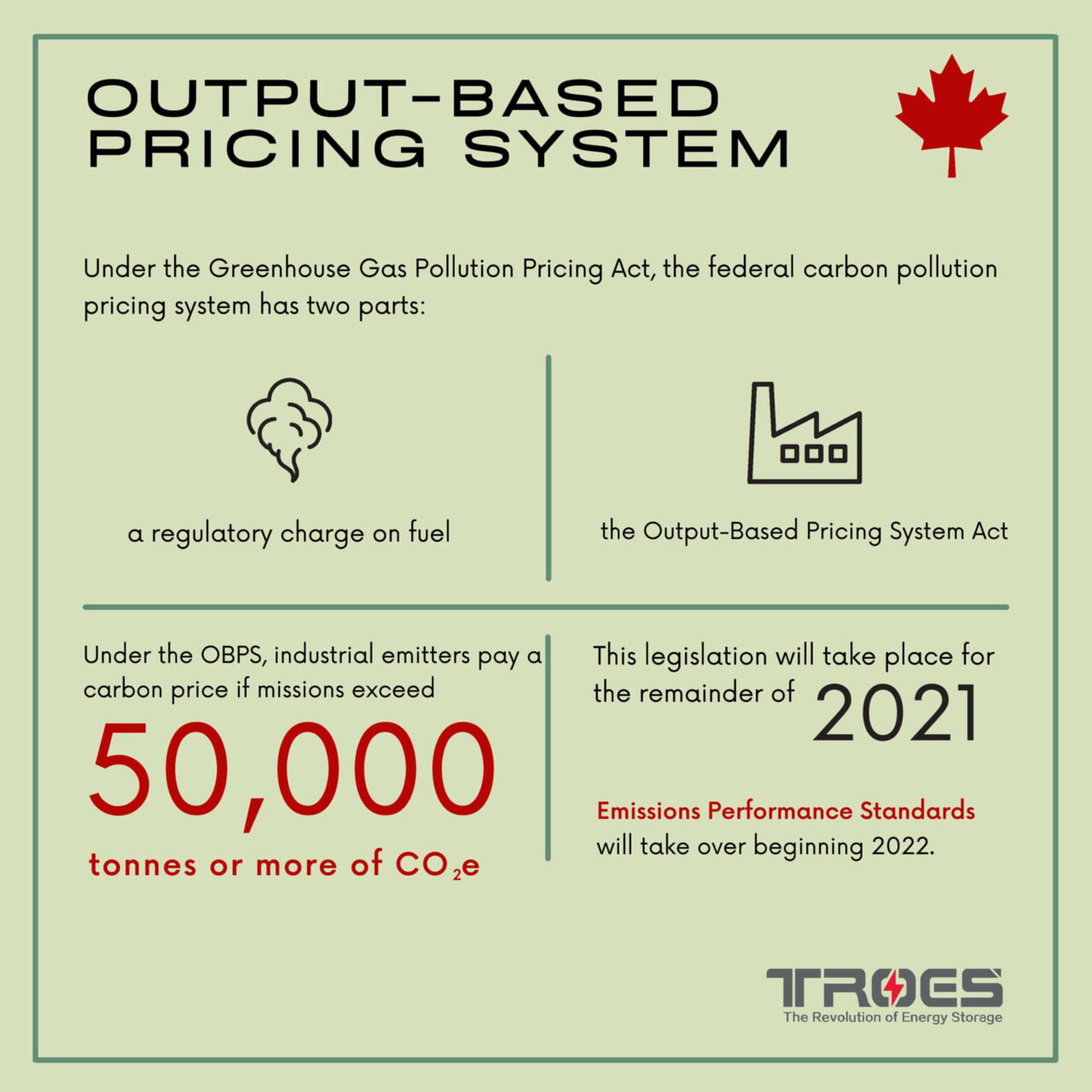3 Reasons Why the Transition from Output Based Pricing System to the Ontario Emissions Performance Standards is GREAT for Canada

Canada continues to make big waves on their goal to achieve net-zero emissions by 2050. This past March, the federal Minister of Environment and Climate Change announced that Ontario would be transitioning from the federal Output-Based Pricing System (OBPS) to the Ontario Emissions Performance Standards (EPS) on the January 1, 2022. This is a great step in the right direction for Canada.
Output Based Pricing System
The federal OBPS is designed to provide a price incentive for industrial emitters to reduce their greenhouse gas emission while maintaining competitiveness and protecting against carbon leakage. Under the Greenhouse Gas Pollution Pricing Act, the federal carbon pollution pricing system has two parts:
- a regulatory charge on fuel (federal fuel charge)
- a regulatory trading system for industry – the federal Output-Based Pricing System
Under the OBPS, industrial emitters pay a carbon price if the emissions at their facilities exceed 50,000 tonnes or more of CO2e. This legislation will take place for the remainder of 2021 where the Emissions Performance Standards will take over beginning 2022.

Emissions Performance Standards
The Emissions Performance Standards program is one of Ontario’s commitments under the Made-in-Ontario Environment Plan. The program is designed to make polluters accountable for their greenhouse gas emissions with a system that is tough but fair, cost-effective and flexible.
The program was created under the Emissions Performance Standards Regulation which came into effect July of 2019, but as of January 1, 2022, it will be replacing the Output-Based Pricing System. Both the OBPS and EPS program regulate greenhouse gas emissions from large industrial facilities.
Ontario EPS will be implemented in phases to give Ontario industries more time to meet their obligations. The new program is set to gradually increase the carbon price about $10/tonne per year. The standards following GHG become stricter every year to meet the ambitious demands of Canada achieving net-zero emissions by 2050.
To learn more about the Emissions Performance Standards program, facilities that must register and how to register your facility, visit the Ontario website for more information.

Why the Emissions Performance Standards is Great For Canada
Although industrial emitters will disagree, the proposal of a new EPS program is a great step forward for Canada. The EPS will help Canada hit net-zero emissions by 2050 and inspire companies to go green. It is safe to expect that the carbon pricing will be increasing in the future which is why now more than ever it is important for emitters to transition their processes. Here are 3 reasons why the new Ontario EPS is great for all Canadian businesses and how emitters can transition to “greener” strategies.
#1. Emissions Performance Standard Will Help Canada Hit Net-Zero Emissions by 2050
Many countries all over the world, including Canada, have pledged to set a path to achieve carbon neutrality by 2050. If history has anything to say, Canada has failed to live up to its climate commitments in recent decades.
A report from the Auditors General mentions Canada has missed two separate emission reduction targets: 1992 Rio target and the 2005 Kyoto target). Despite a dip in emissions caused by the pandemic, Canada may not be on track to meet its 2030 goal either.
With the Ontario EPS rolling out in stages for the next decade, polluters should be prepared with a plan to find creative strategies to offset their GHG, which will help Canada in the long run achieve their goal of carbon neutrality by 2050.
#2. Inspire Companies to go Green
Understandably, large industrial facilities are disappointed with the decision to increase the price of carbon. EPS tax must be imposed to prevent businesses from polluting the environment and inspire them to go green.
The goal is not to harm these businesses.
The goal is to inspire businesses to change their processes.
About one-quarter of greenhouse gas emissions come directly from industrial sources including manufacturing, food, processing, mining and construction. There are several ways industrial facilities can reduce greenhouse gas emissions, such as energy efficiency, fuel switching, combined heat and power, use of renewable energy and the more efficient use and recycling of materials.
#3. Companies That Transition to Net-Zero Will Save More Money
If it wasn’t for the increasing charges being made by the Minister of Environment and Climate Change, businesses would not be inclined to change their processes. The average solar battery storage system typically takes anywhere from 6 to 12 years to pay back not including any rebates, incentives or subsidies. The quicker facilities implement green strategies, the quicker they begin to save on their monthly bill.
A giant facility in Canada emits large greenhouse gas emissions resulting in a huge charge on their bill. The solution to help this company is to change all-natural gas equipment to electric and supplement their grid power with solar plus battery storage. Solar panels will help charge the battery energy storage system (BESS) during the day while the BESS powers the equipment.
After the transition, the facility becomes 95% electric and 5% gas and no longer experiences major downtime when the grid goes out. Also, with the help of energy storage and solar, the facility can reduce their bill by up to 90% and have a payback period of about 6 years.
How Companies Can Transition to Net-Zero Emissions
Although industrial emitters will disagree, the proposal of a new EPS program is a great step forward for Canada. The EPS will help Canada hit net-zero emissions by 2050 and inspire companies to go green. Unfortunately, the price per tonne is not decreasing and emitters need to find creative ways of staying afloat.
The flexibility of energy storage allows it to be paired with different renewable sources and apply it to different project needs, while significantly reducing costs in the long term. To learn more about battery storage and how to reduce your emissions, reach out to Canadian based Battery Energy Storage company TROES.






